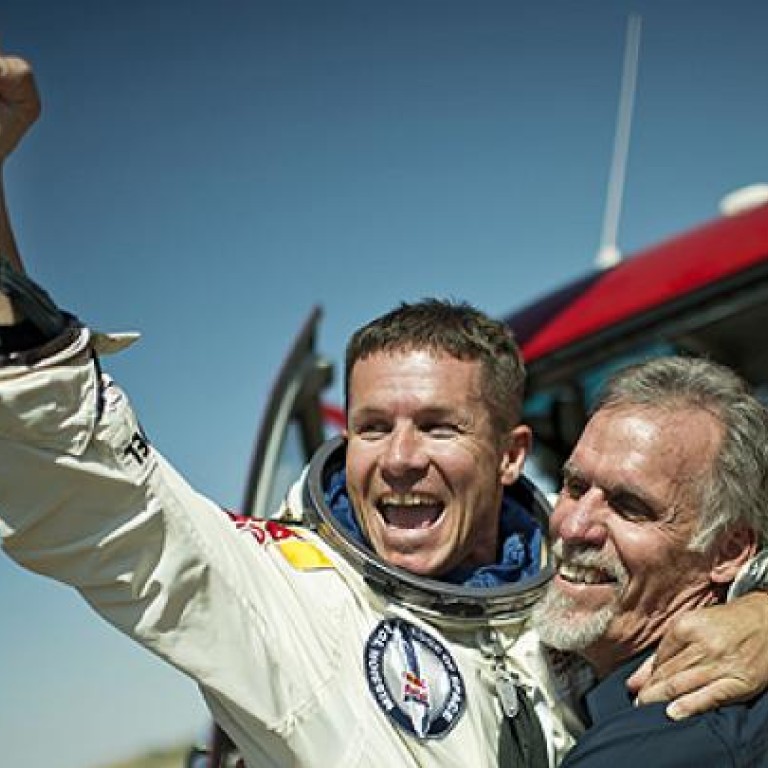
Austrian daredevil Felix Baumgartner breaks sound barrier
Austrian daredevil Felix Baumgartner made a record-breaking leap from the edge of space, landing safely in the New Mexico desert after freefalling from more than 39 kilometres above the earth. The 43-year-old floated down to earth on a red and white parachute canopy, which he had opened after reaching speeds of 1,342km/h in freefall.
Austrian daredevil Felix Baumgartner made a record-breaking leap from the edge of space on Sunday, landing safely in the New Mexico desert after freefalling from more than 39 kilometres above the earth.
The 43-year-old floated down to earth on a red and white parachute canopy, which he had opened after reaching speeds of more than 1,120km/h in freefall.
Mission control erupted in cheers as Baumgartner made a near-perfect jump from a capsule hoisted aloft by a giant helium-filled balloon to an altitude of about 39km.
"Sometimes you have [go] up really high to [realise] how small you are," Baumgartner said shortly before he jumped, watched in live footage beamed around the world.
He had taken more than two hours to get up to the jump altitude. Baumgartner had already broken one record, before he even leapt: the previous highest altitude for a manned balloon flight was 34km, set in 1961.
The Austrian had been due to jump from 36.5km, but the balloon went higher than expected, to more than 39km.
The Red Bull Stratos mission was the second attempt for the skydiver after an initial bid last week was aborted at the last minute due to winds.
The biggest risk Baumgartner faced was spinning out of control, which could exert G forces and make him lose consciousness. A controlled dive from the capsule was essential, putting him in a head-down position to increase speed.
More gruesomely, the skydiver's blood could have boiled if there were the slightest tear or crack in his pressurised spacesuit-like outfit, due to instant depressurisation at the extreme altitude.
Temperatures of minus 68 Celsius could also have had unpredictable consequences if his suit somehow failed.
The leap went off flawlessly though there was a minor problem as the capsule ascended: a heater failed on Baumgartner's helmet faceplate, meaning it was becoming fogged up when he exhaled.
After considering the options they decided to go ahead with the jump.
Baumgartner's 100-strong backup team includes retired US Air Force Colonel Joe Kittinger, who had held one of the records he was trying to break: the highest freefall jump, which he made from 31,333 metres in 1960.
"Let the guardian angel take care of you," Kittinger told Baumgartner shortly before he leapt into the void.
The giant balloon -- which holds 30 million cubic feet of helium -- is needed to carry the Red Bull Stratos capsule, which weighs nearly 1.3 tonnes, to the stratosphere.
It is made of near transparent polyethylene strips even thinner than a dry cleaner bag, which are heat-sealed together. Very thin material is necessary to save weight.
The Austrian has been training for five years for the jump. He holds several previous records, notably with spectacular base jumps from the Petronas Towers in Kuala Lumpur and the Christ the Redeemer statue in Rio de Janeiro, Brazil.
Speaking before the launch, Baumgartner said he would be proud to be the first person to break the speed of sound in freefall.
"But really, I know that part of this entire experience will help make the next pressure suit safer for space tourists and aviators," the jumper pointed out.
Sunday's launch coincided with the 65th anniversary of American pilot Chuck Yeager breaking the speed of sound.
